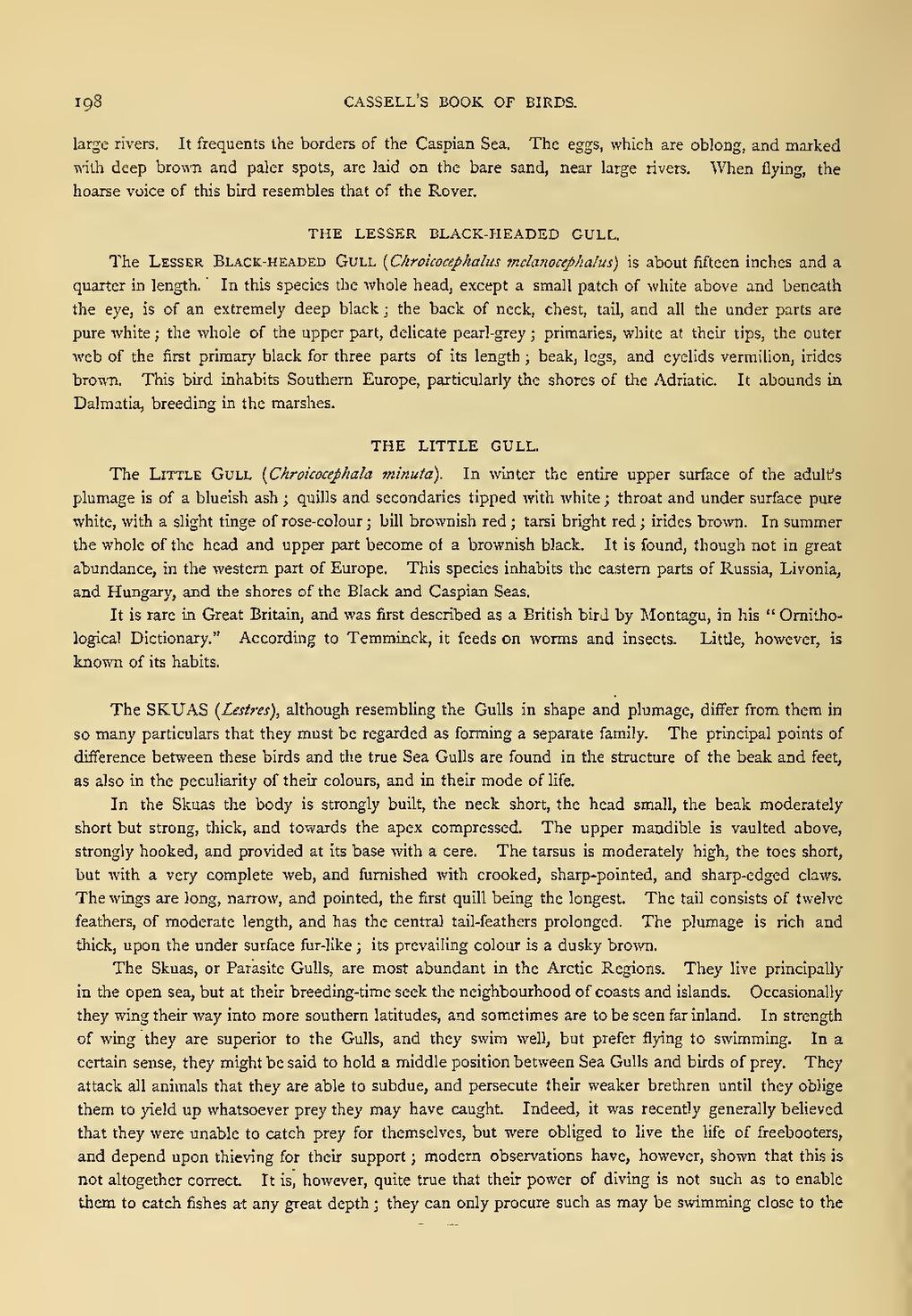large rivers. It frequents the borders of the Caspian Sea. The eggs, which are oblong, and marked with deep brown and paler spots, are laid on the bare sand, near large rivers. When flying, the hoarse voice of this bird resembles that of the Rover.
THE LESSER BLACK-HEADED GULL.
The Lesser Black-headed Gull (Chroicocephalus melanocephalus) is about fifteen inches and a quarter in length. In this species the whole head, except a small patch of white above and beneath the eye, is of an extremely deep black; the back of neck, chest, tail, and all the under parts are pure white; the whole of the upper part, delicate pearl-grey; primaries, white at their tips, the outer web of the first primary black for three parts of its length; beak, legs, and eyelids vermilion, irides brown. This bird inhabits Southern Europe, particularly the shores of the Adriatic. It abounds in Dalmatia, breeding in the marshes.
THE LITTLE GULL.
The Little Gull (Chroicocephalus minuta). In winter the entire upper surface of the adult's plumage is of a blueish ash; quills and secondaries tipped with white; throat and under surface pure white, with a slight tinge of rose-colour; bill brownish red; tarsi bright red; irides brown. In summer the whole of the head and upper part become of a brownish black. It is found, though not in great abundance, in the western part of Europe. This species inhabits the eastern parts of Russia, Livonia, and Hungary, and the shores of the Black and Caspian Seas.
It is rare in Great Britain, and was first described as a British bird by Montagu, in his "Ornithological Dictionary." According to Temminck, it feeds on worms and insects. Little, however, is known of its habits.
The SKUAS (Lestres), although resembling the Gulls in shape and plumage, differ from them in so many particulars that they must be regarded as forming a separate family. The principal points of difference between these birds and the true Sea Gulls are found in the structure of the beak and feet, as also in the peculiarity of their colours, and in their mode of life.
In the Skuas the body is strongly built, the neck short, the head small, the beak moderately short but strong, thick, and towards the apex compressed. The upper mandible is vaulted above, strongly hooked, and provided at its base with a cere. The tarsus is moderately high, the toes short, but with a very complete web, and furnished with crooked, sharp-pointed, and sharp-edged claws. The wings are long, narrow, and pointed, the first quill being the longest. The tail consists of twelve feathers, of moderate length, and has the central tail-feathers prolonged. The plumage is rich and thick, upon the under surface fur-like; its prevailing colour is a dusky brown.
The Skuas, or Parasite Gulls, are most abundant in the Arctic Regions. They live principally in the open sea, but at their breeding-time seek the neighbourhood of coasts and islands. Occasionally they wing their way into more southern latitudes, and sometimes are to be seen far inland. In strength of wing they are superior to the Gulls, and they swim well, but prefer flying to swimming. In a certain sense, they might be said to hold a middle position between Sea Gulls and birds of prey. They attack all animals that they are able to subdue, and persecute their weaker brethren until they oblige them to yield up whatsoever prey they may have caught. Indeed, it was recently generally believed that they were unable to catch prey for themselves, but were obliged to live the life of freebooters, and depend upon thieving for their support; modern observations have, however, shown that this is not altogether correct. It is, however, quite true that their power of diving is not such as to enable them to catch fishes at any great depth; they can only procure such as may be swimming close to the
